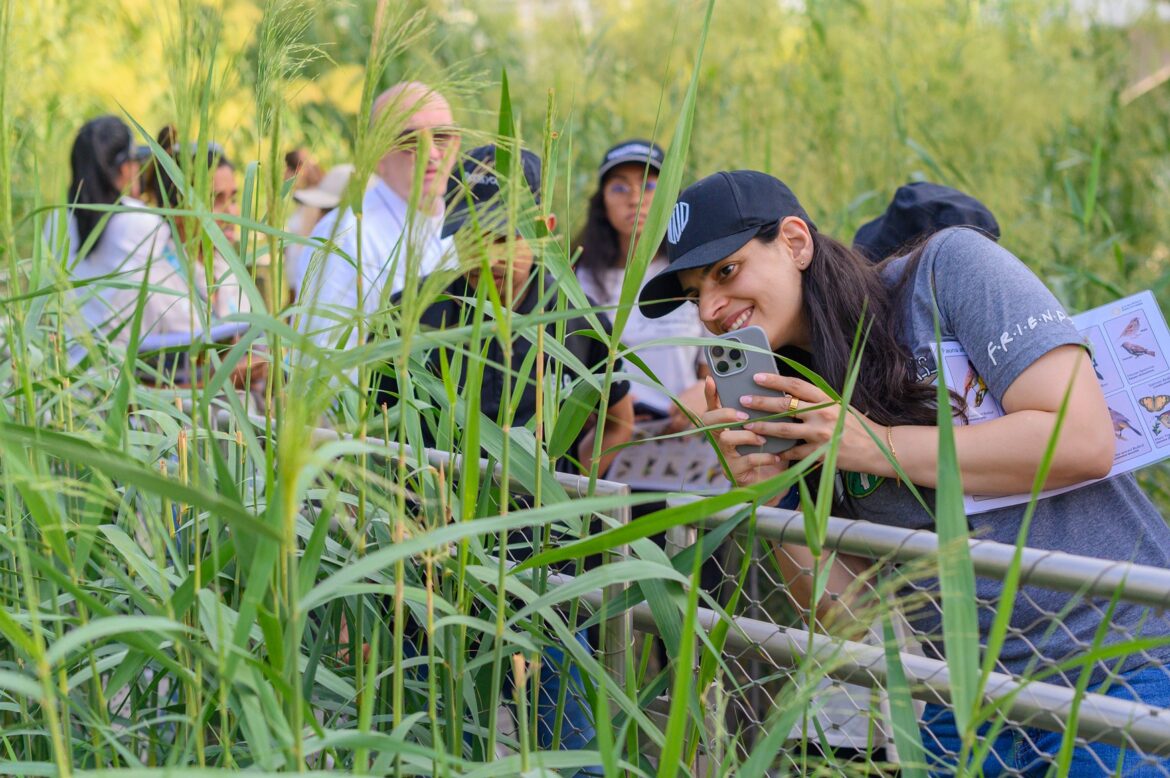As part of its efforts to preserve marine habitats and ecosystems and protect cultural heritage, and within the framework of the Abu Dhabi Climate Change Strategy, the Environment Agency – Abu Dhabi (EAD) has launched a project to survey, evaluate, and restore traditional oyster habitats in the emirate.
The project, which is the first of its kind in the Arabian Gulf region, aims to reduce the effects of climate change and improve seawater quality by expanding the area of oyster habitats that help to absorb and store carbon dioxide from seawater during shell formation. The project also seeks to enhance the marine environment and biodiversity, as well as preserve the cultural heritage of Abu Dhabi.
EAD’s database will be enhanced via a comprehensive survey and assessment of traditional oyster beds to create a modern interactive digital map. The project also aims to increase environmental awareness about the importance of protecting and restoring marine habitats by involving school students under the Sustainable Schools Initiative (SSI) to assemble the artificial reefs. The new initiative represents a step toward strengthening the emirate’s leadership related to studies and research regarding the restoration of oyster habitats and associated ecosystems.
In the project’s first phase, which focused on collecting data on traditional pearl diving sites, EAD was able to identify 335 diving sites using multiple scientific sources, including maps, historical books, and the agency’s database, as well as consultations with traditional fishermen in the emirate. After completing the survey of the identified sites and assessing the status of their oysters, the EAD will begin formulating a plan to restore the degraded sites and design rigs using oyster shells produced at the Abu Dhabi Pearl Centre in the Mirfa area, while developing an updated digital map of the current oyster habitats in the emirate.
In the second phase of the project, EAD completed evaluation of 150 traditional beds out of 335, discovered 200 new oyster habitats and developed a plan to restore affected beds. Among the assessed sites, the agency selected Umm Al Salsal, a degraded traditional diving site near the eastern side of Marawah Island, for oyster restoration efforts.
As part of the oyster restoration plan, EAD designed, developed, and installed 64 differently shaped structures at Umm Al Salsal. Around 30 students from Al Marfa schools participating in the SSI helped assemble the structures made from sustainable materials, including oyster shells from the Abu Dhabi Pearl Centre. A monitoring plan is currently underway to assess the progress and success of the selected site for restoration.
Ahmed Al Hashemi, Executive Director of the Terrestrial and Marine Biodiversity Sector at EAD, said: “Before the advent of cultured pearls and the discovery of oil, the Arabian Gulf was a major centre for the pearl trade, famous for producing the finest, world-renowned pearls. Diving was not only a profession or a means of livelihood, but also an integrated social system that had a profound impact on the region’s culture and traditions. However, this industry required the extraction of thousands of oysters to obtain a few precious gems. Today, the Environment Agency – Abu Dhabi seeks to revive this rich cultural heritage in a modern and sustainable way by supporting and adopting pearl farming practices.
“We are keen to expand aquaculture activities in the emirate of Abu Dhabi and, through the pearl oyster restoration project, we seek to benefit from its great benefits, such as enhancing biodiversity, supporting various marine species, and improving the health of the ecosystem in general. In addition, pearl oysters have historical and cultural significance to Abu Dhabi and their restoration enhances this connection. Pearl oysters also contribute to water purification and help maintain the balance of marine ecosystems, which directly impacts environmental sustainability,” he added.
The EAD’s future plans for the Pearl Oyster Restoration Project include a wide range of environmental, and community initiatives and will see a gradual expansion of restoration sites as initial efforts demonstrate success – identifying additional suitable sites and increasing the number of oysters being cultured and rehabilitated. In the long term, these efforts may stimulate investment in scientific research to develop more efficient and effective restoration techniques, which may include genetic studies of pearl oysters, advanced breeding programmes, and innovative aquaculture techniques.



